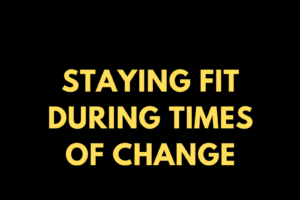High-Intensity Interval Training (HIIT) is an effective and time-efficient way to exercise, but it’s crucial to approach it safely to avoid injury and overtraining. Here are some guidelines for safely using HIIT:
Start with a Warm-Up before High Intensity Interval Training (HIIT)
Always begin with a warm-up to prepare your muscles and cardiovascular system. This could include light jogging, stationary biking, dynamic stretches, or low-intensity movements that mimic your workout.
Understand Your Fitness Level
If you’re new to HIIT or returning after a break, start slowly. You might begin with shorter intervals and lower intensity, gradually building up as your fitness improves.
Use Proper Technique
Good form is crucial. Poor technique not only reduces the effectiveness of your workout but also increases the risk of injury. If you’re unsure about how to perform an exercise correctly, consider seeking advice from a fitness professional.
Listen to Your Body
HIIT is demanding, and it’s essential to be aware of how your body feels. If you experience pain (beyond typical muscle fatigue), dizziness, or extreme shortness of breath, take a break or stop the exercise.
Balance HIIT with Other Training
Avoid doing HIIT every day. Your body needs time to recover. Include lower-intensity workouts and strength training in your routine for balance.

Stay Hydrated and Nourished
Drink plenty of water before, during, and after your workout. Also, ensure you’re eating a balanced diet to fuel your body for high-intensity workouts.
Cool Down and Stretch
After a HIIT session, take time to cool down with gentle movement and stretching. This helps in recovery and can reduce muscle soreness.
Rest and Recover
Allow your body time to recover between HIIT workouts. This might mean taking a day off or doing a lighter workout. Adequate sleep and nutrition are also vital for recovery.
Set Realistic Goals
Set achievable goals based on your fitness level and work towards them gradually. Don’t push yourself to match what others are doing; everyone’s fitness journey is unique.
Consider Health Conditions
If you have any pre-existing health conditions or concerns, consult with a healthcare provider before starting a HIIT regimen.
Takeaways
Remember, while HIIT is a powerful tool for improving fitness, it’s not the only way to stay in shape. Balancing HIIT with other forms of exercise and rest is key to a well-rounded fitness regimen.
Recommended Reading
What Harvard Has to Say About HIIT
The Ultimate Guide to Understanding High-Intensity Interval Training (HIIT) Workouts
Disclaimer: This post contains some affiliate links, which means that we make a small commission off items you purchase at no additional cost to you.








